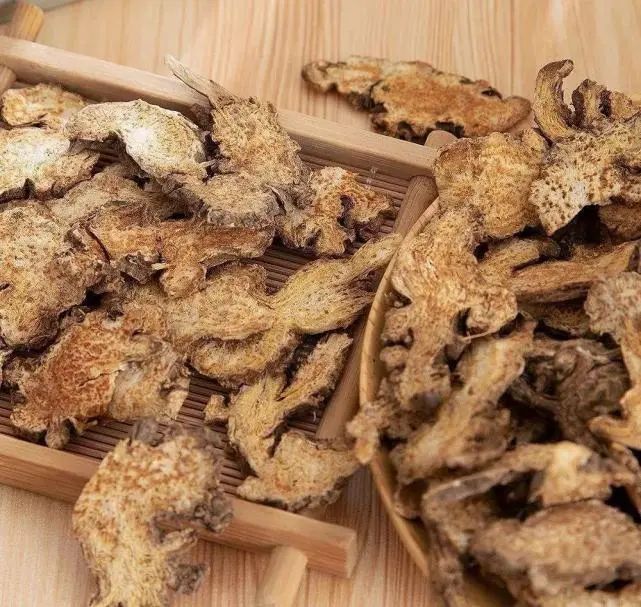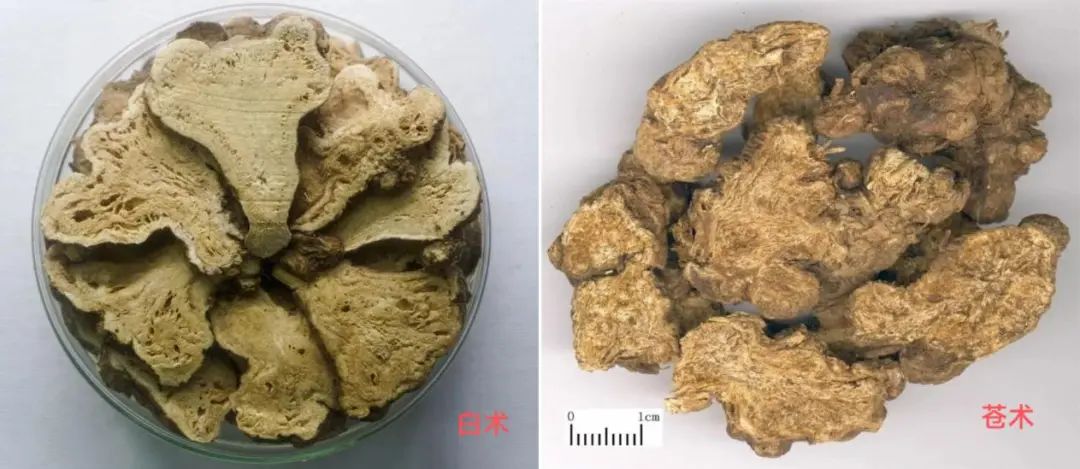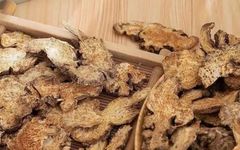
Click the blue text to follow us

Previously, I introduced Bai Zhu (Atractylodes macrocephala) — the primary herb for tonifying Qi and strengthening the spleen. Today, I will introduce another herb that is often confused with Bai Zhu, Cang Zhu (Atractylodes lancea).


Cang Zhu is the dried rhizome of the Asteraceae plant, either Cang Zhu or Bei Cang Zhu. It is harvested in spring and autumn, cleaned of soil, dried, and the fibrous roots are removed.
Cang Zhu has a pungent and bitter taste, and is warm in nature. It enters the Spleen, Stomach, and Liver meridians. Its functions include drying dampness and strengthening the Spleen, dispelling wind and cold, and improving vision. It is used for dampness obstructing the middle Jiao, abdominal distension, diarrhea, edema, beriberi, rheumatic pain, wind-cold colds, night blindness, and blurred vision.
Cang Zhu and Bai Zhu are collectively referred to as “Zhu” in the Shen Nong Ben Cao Jing (Shen Nong’s Classic of Materia Medica), classified as superior herbs, and noted for their ability to “be made into decoctions. Long-term use leads to lightness of body, longevity, and lack of hunger.” Both are classified as herbs that strengthen the Spleen and nourish the Stomach. Over time, they have been differentiated for use in treating different conditions.
Although both are named “Zhu,” their pharmacological components differ significantly:


Cang Zhu is warm in nature, with a pungent and bitter taste, and enters the Spleen, Stomach, and Liver meridians. It has the functions of drying dampness and strengthening the Spleen, relieving depression and eliminating filth, and dispelling wind and cold. The Zhen Zhu Nang (Pearl Bag) states: “It can strengthen the Stomach and calm the Spleen; no other herb can eliminate all dampness.”
Bai Zhu is warm in nature, with a sweet and bitter taste, and enters the Spleen and Stomach meridians. It has the functions of strengthening the Spleen and benefiting Qi, drying dampness and promoting urination, stopping sweating, and calming the fetus.
Although both herbs have the functions of strengthening the Spleen and drying dampness, they can be used to treat conditions of damp obstruction in the middle Jiao and Spleen deficiency.
However, Bai Zhu primarily focuses on tonifying Qi and strengthening the Spleen, making it a key herb for Spleen deficiency, suitable for conditions such as Spleen deficiency with dampness, poor appetite, indigestion, diarrhea, edema, spontaneous sweating, and fetal restlessness.
In contrast, Cang Zhu primarily focuses on bitter warmth and drying dampness, making it a key herb for promoting Spleen function, suitable for conditions such as cold damp obstruction in the middle Jiao, abdominal distension and pain, diarrhea, and rheumatic pain.
When used together, one disperses while the other supplements; one focuses on the Stomach while the other on the Spleen. Bai Zhu benefits from Cang Zhu, compensating for the deficiency of the Spleen while eliminating excess dampness; Cang Zhu benefits from Bai Zhu, promoting Spleen function while eliminating excess dampness, thus enhancing the mutual benefits of drying dampness and strengthening the Spleen. They are commonly used to treat Spleen deficiency with phlegm-damp obstruction:
1. Spleen and Stomach dysfunction, leading to poor appetite, abdominal distension after eating, and nausea.
2. External dampness obstructing the Spleen, causing Qi stagnation, chest fullness, and difficulty breathing.
3. Dampness descending into the intestines, presenting with abdominal distension, borborygmi, and diarrhea.
END· Please follow the public account of Heshan City Traditional Chinese Medicine Hospital · Service Account
Service Account Subscription Account
Subscription Account Video Account
Video Account


